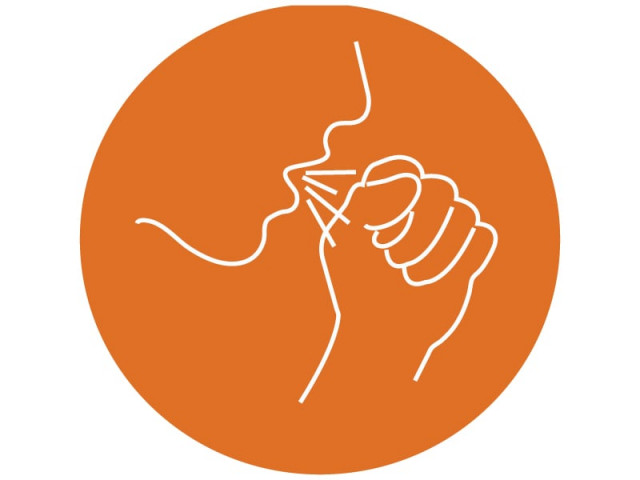Whooping cough: A 100 day cycle
The life-threatening whooping cough can last more than 10 weeks and is often dismissed as a common cold or flu

The life-threatening whooping cough can last more than 10 weeks and is often dismissed as a common cold or flu. DESIGN BY MARYAM RASHID AND HIRA FAREED
The incubation period of the infection is seven days to 17 days and it spreads in cold climates and congested or overcrowded places. It is estimated that whooping cough affects 48.5 million people worldwide annually, and results in 295,000 deaths.
Pertussis manifests as a mild, dry cough, flu, coryza (inflammation of the mucous membrane in the nose) and a decreased appetite for seven to 10 days. This is followed by short but severe attacks of coughing in bouts as thick mucus accumulates inside the airways. These bouts are followed by gasps for air (the whooping noise) and even vomiting. The coughing attack mostly occurs two to three times a day but the severity of the cough can result in cyanosis, a bluish discolouration of the skin due to insufficient oxygen in the blood.
Teens and adults often recover from whooping cough with no problems but side effects include bruised or cracked ribs, abdominal hernias, broken blood vessels in the skin or the whites of the eyes due to persistent coughing. In infants, side effects include pneumonia, slowed or stopped breathing, dehydration or weight loss due to feeding difficulties and seizures and brain damage. A reluctance to feed, persistent vomiting, lethargy, cyanosis, apnea and seizures with high fever are signs to look out for in children who may be infected.
Diagnosing whooping cough in its early stages can be difficult because the symptoms resemble those of other common respiratory illnesses, such as flu or bronchitis. The diagnosis is aided by swabs from the area where the nose and throat meet (nasopharynx), blood counts and chest X-rays.

Once diagnosed, the patient should urgently seek medical consultation, use antibiotics and oxygen therapy and eat carefully. The infective period of pertussis ranges from the start of a mild cough, flu and fever to the onset of bouts of coughing or until five days after the patient starts antibiotics. The patient should be isolated and caretakers should be careful about secretions when handling the patient.
To protect against the infection, children should be vaccinated according to the immunisation schedule at birth, then at six weeks, 10 weeks, 14 weeks, nine months and 15 months. The efficacy of the vaccine is 71% to 85%, following three doses of diphtheria, tetanus and pertussis vaccine (DTaP).
Waning immunity and mutations in bacteria causes vaccines to be ineffective in some cases. Vaccinations last from three years to six years and doctors recommend booster shots in adolescents (after the age of 11 years) or a vaccination every 10 years in adults. Pregnant women are advised to receive the pertussis vaccine between 27 weeks and 36 weeks of conception.
Published in The Express Tribune, Sunday Magazine, February 15th, 2015.



















COMMENTS
Comments are moderated and generally will be posted if they are on-topic and not abusive.
For more information, please see our Comments FAQ